
Nahuel Huapi National Park: Nature's Argentine Gem
Explore Nahuel Huapi National Park: Argentina's oldest national park boasting glacial lakes, lush forests, and abundant wildlife in the heart of Patagonia.
Nestled in the Argentine Patagonia, Nahuel Huapi National Park is a breathtaking expanse of pristine wilderness. This park, established in 1934, is the oldest national park in Argentina. It covers an area of nearly 7,050 square kilometers, offering visitors an array of stunning landscapes that include dense forests, rugged mountains, and crystal-clear lakes. The park's centerpiece is Lake Nahuel Huapi, an ancient glacial lake spanning over 500 square kilometers. Its sparkling blue waters are surrounded by snow-capped peaks and lush greenery. The lake is perfect for various water activities like kayaking, fishing, and sailing. The park is also a haven for hikers, with numerous trails providing different levels of challenge and access to scenic viewpoints and hidden waterfalls. Wildlife enthusiasts will be thrilled to encounter a rich variety of species here, including the elusive Andean condor and the shy huemul deer. The park's diverse ecosystems support an abundance of flora and fauna, making it a paradise for nature lovers. Whether you're looking to embark on an adventurous trek or simply relax and enjoy the serene beauty, Nahuel Huapi National Park offers something for everyone.
Local tips in Nahuel Huapi National Park
- Visit during the spring and summer months (November to March) for the best weather and optimal hiking conditions.
- Head to the town of Bariloche for accommodation and dining options, as it is the main gateway to the park.
- Bring layers of clothing, as the weather can vary greatly within the park, especially in the higher altitudes.
- Rent a car for greater flexibility in exploring the park's vast expanse and reaching less accessible areas.
- Consider a guided tour for insights into the park's history, geology, and ecology, enhancing your overall experience.
Nahuel Huapi National Park: Nature's Argentine Gem
Nestled in the Argentine Patagonia, Nahuel Huapi National Park is a breathtaking expanse of pristine wilderness. This park, established in 1934, is the oldest national park in Argentina. It covers an area of nearly 7,050 square kilometers, offering visitors an array of stunning landscapes that include dense forests, rugged mountains, and crystal-clear lakes. The park's centerpiece is Lake Nahuel Huapi, an ancient glacial lake spanning over 500 square kilometers. Its sparkling blue waters are surrounded by snow-capped peaks and lush greenery. The lake is perfect for various water activities like kayaking, fishing, and sailing. The park is also a haven for hikers, with numerous trails providing different levels of challenge and access to scenic viewpoints and hidden waterfalls. Wildlife enthusiasts will be thrilled to encounter a rich variety of species here, including the elusive Andean condor and the shy huemul deer. The park's diverse ecosystems support an abundance of flora and fauna, making it a paradise for nature lovers. Whether you're looking to embark on an adventurous trek or simply relax and enjoy the serene beauty, Nahuel Huapi National Park offers something for everyone.
When is the best time to go to Nahuel Huapi National Park?
Iconic landmarks you can’t miss
Parque Nacional Los Arrayanes
Explore the breathtaking beauty of Parque Nacional Los Arrayanes, where unique flora meets serene landscapes in Argentina's Patagonia.

Cathedral Our Lady of Nahuel Huapi
Explore the breathtaking Cathedral of Our Lady of Nahuel Huapi, an architectural gem in the heart of Bariloche, embracing culture, history, and stunning landscapes.

Parque Nahuelito
Explore Parque Nahuelito, where life-sized dinosaur replicas meet breathtaking Patagonia scenery, offering a fun and educational experience for all ages.

Parque Nacional Nahuel Huapi
Discover the unparalleled beauty and adventure of Parque Nacional Nahuel Huapi, a breathtaking national park in the heart of Argentina's Andes.

Old Volcano Caverns
Unveil the hidden beauty of nature at Old Volcano Caverns in Río Negro Province, a stunning tourist attraction filled with geological wonders.

Mirador Lago Nahuel Huapi
Discover the breathtaking beauty of Mirador Lago Nahuel Huapi, a stunning viewpoint offering panoramic views of the lake and surrounding mountains in Argentina.

Unmissable attractions to see
Teleférico Cerro Otto
Experience the breathtaking views and adventure at Teleférico Cerro Otto, the iconic mountain cable car in Bariloche, Argentina.

Parque Nacional Los Arrayanes
Discover the breathtaking beauty of Parque Nacional Los Arrayanes, a hidden gem in Argentina's Patagonia known for its stunning arrayán trees and outdoor adventures.

Bosque De Arrayanes Embarcadero
Explore the enchanting Bosque De Arrayanes, a national forest of unique Arrayán trees and stunning views of Nahuel Huapi Lake in Argentina's Neuquén Province.
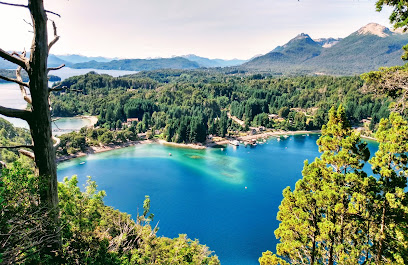
Bahía Serena
Explore the tranquil beauty of Bahía Serena, a stunning beach in Bariloche, surrounded by the Andes and offering adventure and relaxation.

Plaza Catedral
Discover Plaza Catedral in Bariloche, a scenic park perfect for relaxation, culture, and breathtaking views of the Andes mountains.
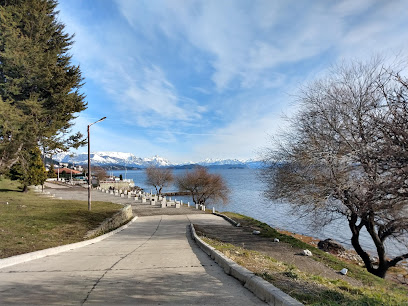
Mirador Cerro Capilla
Experience the breathtaking beauty of Mirador Cerro Capilla in Río Negro, Argentina, where stunning views and serene nature create unforgettable memories.

Cerro Viejo
Experience breathtaking views and exhilarating activities at Cerro Viejo, Bariloche's premier theme park and tourist attraction.

Muelle Bahía López
Discover the breathtaking beauty of Muelle Bahía López, a scenic pier in Bariloche, surrounded by stunning mountain landscapes and pristine waters.
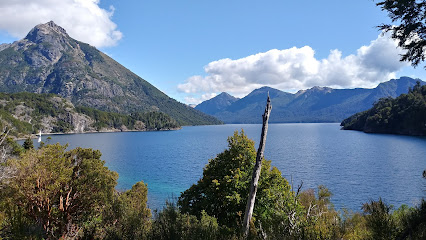
Bariloche Paleontological Museum
Uncover the ancient secrets of Patagonia at the Bariloche Paleontological Museum, where history comes alive through captivating fossil exhibits.

Playa Brazo Última Esperanza
Discover the breathtaking landscapes and outdoor adventures at Playa Brazo Última Esperanza, a national park paradise in Lago Nahuel Huapi, Argentina.

Mirador Paso Coihue
Experience the unparalleled beauty of Patagonia at Mirador Paso Coihue, a stunning viewpoint in Neuquén Province that captures nature's essence.

Mirador Lago Nahuel Huapi
Discover stunning vistas at Mirador Lago Nahuel Huapi, a scenic viewpoint in Argentina's breathtaking Parque Nacional Nahuel Huapi.

K1 Mirador
Discover the breathtaking views at K1 Mirador in Bariloche, where stunning landscapes meet serene waters for an unforgettable experience in Patagonia.

Inicio Sendero Brazo Tristeza
Explore the natural beauty of Sendero Brazo Tristeza, a breathtaking hiking trail in San Carlos de Bariloche, Argentina, offering stunning views and serene landscapes.
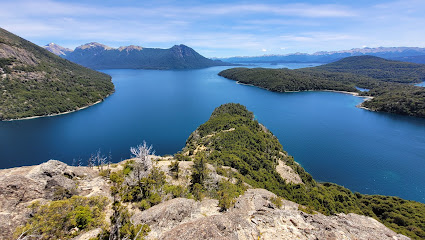
Noche Nordica
Explore the breathtaking beauty of Noche Nordica, a stunning tourist attraction in Bariloche, offering panoramic views, rich culture, and outdoor adventures.

Essential places to dine
Kunstmann
Discover the authentic flavors of Argentina at Kunstmann Brewpub, where craft beer meets delicious cuisine in breathtaking Bariloche.

El Boliche de Alberto Pastas
Experience the best homemade pasta and authentic Italian flavors at El Boliche de Alberto Pastas in San Carlos de Bariloche.

El Patacón
Discover the authentic taste of Argentina at El Patacón in Bariloche - where tradition meets flavor amidst breathtaking landscapes.
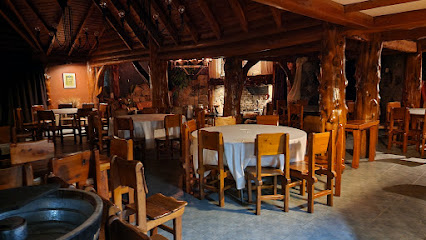
Restaurant Punto Panorámico
Experience exquisite Argentine cuisine with stunning views at Restaurant Punto Panorámico in San Carlos de Bariloche.

Rincón Patagónico
Experience authentic Argentinian cuisine amidst the breathtaking landscapes of San Carlos de Bariloche at Rincón Patagónico.
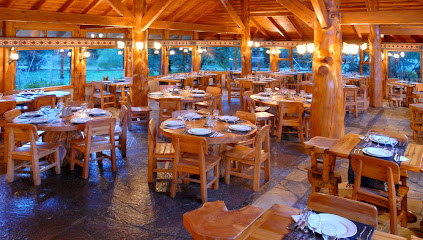
Alto El Fuego - Centro
Discover authentic Argentinian grill flavors at Alto El Fuego in San Carlos de Bariloche - an unforgettable dining experience awaits!

El Mallín
Discover authentic Patagonian flavors at El Mallín in San Carlos de Bariloche—where culinary tradition meets breathtaking natural beauty.

Casa Caracol Patagonia
Discover the essence of Nuevo Latino cuisine at Casa Caracol Patagonia, where breathtaking views meet unforgettable flavors in San Carlos de Bariloche.

Stag
Discover exquisite Argentinian cuisine at Stag, where every meal is enhanced by breathtaking views of Lake Nahuel Huapi.

Tearoom Hotel Amancay
Experience tranquility at Tearoom Hotel Amancay in Bariloche – where exquisite teas meet stunning natural beauty.

Las Morillas
Experience authentic Argentine cuisine amidst breathtaking views at Las Morillas in San Carlos de Bariloche.

Ãnima
Discover authentic Argentine flavors at Ãnima in San Carlos de Bariloche, where culinary excellence meets breathtaking scenery.

Compañía General de Panchos del Arroyo López
Discover the delicious world of gourmet hot dogs at Compañía General de Panchos del Arroyo López in stunning San Carlos de Bariloche.

Restaurante Il Ritorno
Discover exquisite Italian flavors amidst breathtaking views at Restaurante Il Ritorno in San Carlos de Bariloche.

Buena Vista Restó
Experience the flavors of Argentina at Buena Vista Restó in San Carlos de Bariloche – where culinary excellence meets stunning views.

Markets, malls and hidden boutiques
Shopping Patagonia
Explore Shopping Patagonia in Bariloche: A vibrant mall offering diverse retail experiences, local crafts, and entertainment for every traveler.

Galeria del sol bariloche
Explore Galeria del Sol in Bariloche: A shopping paradise filled with local craftsmanship and unique souvenirs in the heart of Patagonia.

Handicrafts The Coihue
Explore Handicrafts The Coihue in Bariloche for unique artisanal gifts and cake decorating supplies, reflecting rich local craftsmanship.

Colectivo de Diseño
Discover the artistic essence of Bariloche at Colectivo de Diseño, where local artisans showcase their unique gifts and crafts.

Morena Llao Llao
Discover the best of Patagonia fashion at Morena Llao Llao, a stylish clothing store in San Carlos de Bariloche, perfect for tourists seeking unique apparel.

Shopping Onelli
Discover Shopping Onelli in San Carlos de Bariloche, your go-to destination for top-quality appliances, furniture, and home goods.

Paseo de la Catedral
Discover the vibrant shopping experience at Paseo de la Catedral in Bariloche, where local crafts meet international brands amidst stunning mountain views.

El Bosque
Discover El Bosque, a charming gift shop in San Carlos de Bariloche, offering unique souvenirs and local crafts that embody the spirit of Patagonia.

Ranchito Patagonia
Explore Ranchito Patagonia, a charming gift shop in San Carlos de Bariloche offering unique handicrafts, clothing, and children's books that embody the spirit of the region.

La Tienda de los Kilómetros
Explore a captivating antique store in San Carlos de Bariloche, offering a unique glimpse into Argentina's rich history and craftsmanship.

Lokalani
Explore Lokalani, San Carlos de Bariloche's premier skate shop offering top-notch skate gear, trendy men's clothing, and a vibrant community atmosphere.
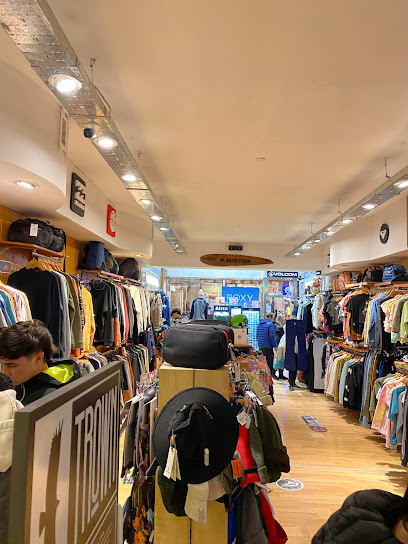
Fukuoka Regalos
Discover unique gifts and local artisan treasures at Fukuoka Regalos in the heart of San Carlos de Bariloche, a must-visit for every traveler.

HM Patagonia - Cuchillos Hechos a Mano / HandMade Knives
Explore the artistry of handmade knives at HM Patagonia, where each piece reflects the unique culture and craftsmanship of the region.

NEHUANA SUBLIMACION BARILOCHE
Explore the charming Nehuana Sublimacion Bariloche for unique gifts and local handicrafts that capture the spirit of the region.

Coiron
Explore Coiron in San Carlos de Bariloche for unique souvenirs that capture the beauty and culture of Patagonia.

Essential bars & hidden hideouts
Manush Centro
Indulge in craft beers and delicious dishes at Manush Centro, a vibrant brewpub in Bariloche, where local flavors meet a welcoming atmosphere.

Chimi Bar de Choris
Discover the flavors of Patagonia at Chimi Bar de Choris, where gourmet fast food meets local brews in a vibrant Bariloche setting.

Wesley Brewery
Discover the best of craft beer at Wesley Brewery in Bariloche, where every sip tells a story of tradition and flavor.

Dahna Beer House
Experience the charm of Dahna Beer House, a cozy brewpub in Playa Bonita, San Carlos de Bariloche, offering craft beers and delicious meals.

Cava Clandestina
Experience the vibrant flavors of artisanal craft beers and Argentine cuisine at Cava Clandestina, a charming brewpub in San Carlos de Bariloche.

Stradibar
Discover Stradibar: A charming brewpub in San Carlos de Bariloche, offering craft beers and local cuisine in a cozy atmosphere.

La Juana Bar Bariloche
Discover La Juana Bar in Bariloche, a lively bar offering a unique blend of Argentinian culture, craft cocktails, and a vibrant nightlife experience.

Cervecería Bachmann
Discover the flavors of Patagonia at Cervecería Bachmann, a premier brewpub offering craft beers and delicious gastropub cuisine in Bariloche.

Kosten Beer Bar
Discover the vibrant craft beer scene at Kosten Beer Bar, where local brews and delicious bites come together in San Carlos de Bariloche.

Modo Bar & Restó
Discover Modo Bar & Restó in Bariloche: A perfect blend of gastropub dining and live music in a vibrant atmosphere.

KUTRAL
Discover KUTRAL, the heart of San Carlos de Bariloche's nightlife, where vibrant culture meets delicious drinks in a cozy atmosphere.

Nené Bar
Discover the lively Nené Bar in San Carlos de Bariloche, a perfect spot for cocktails, music, and unforgettable nights in the heart of Patagonia.

Cervecería Mandela
Discover the flavors of Bariloche at Cervecería Mandela, where craft beers and local cuisine create unforgettable culinary experiences.

Luna Bar
Experience the enchanting Luna Bar in Bariloche, where exquisite cocktails meet stunning views in a vibrant atmosphere.

After7
Experience the vibrant nightlife of San Carlos de Bariloche at After7, where delicious food and crafted cocktails await.

Local Phrases about Nahuel Huapi National Park
-
- HelloHola
[oh-lah] - GoodbyeAdiós
[ah-dee-ohs] - YesSí
[see] - NoNo
[noh] - Please/You're welcomePor favor/De nada
[por fah-vor/deh nah-dah] - Thank youGracias
[grah-see-ahs] - Excuse me/SorryDisculpe/Perdón
[dees-cool-peh/pehr-dohn] - How are you?¿Cómo estás?
[koh-moh ehs-tahs] - Fine. And you?Bien. ¿Y tú?
[bee-ehn. ee too] - Do you speak English?¿Hablas inglés?
[ah-blahs een-glehs] - I don't understandNo entiendo
[noh ehn-tee-ehn-doh]
- HelloHola
-
- I'd like to see the menu, pleaseMe gustaría ver el menú, por favor
[meh goos-tah-ree-ah vehr ehl meh-noo, por fah-vor] - I don't eat meatNo como carne
[noh koh-moh kahr-neh] - Cheers!¡Salud!
[sah-lood] - I would like to pay, pleaseMe gustaría pagar, por favor
[meh goos-tah-ree-ah pah-gahr, por fah-vor]
- I'd like to see the menu, pleaseMe gustaría ver el menú, por favor
-
- Help!¡Ayuda!
[ah-yoo-dah] - Go away!¡Vete!
[veh-teh] - Call the Police!¡Llama a la Policía!
[yah-mah ah lah poh-lee-see-ah] - Call a doctor!¡Llama a un médico!
[yah-mah ah oon meh-dee-koh] - I'm lostEstoy perdido
[ehs-toy pehr-dee-doh] - I'm illEstoy enfermo
[ehs-toy ehn-fehr-moh]
- Help!¡Ayuda!
-
- I'd like to buy...Me gustaría comprar...
[meh goos-tah-ree-ah kohm-prahr] - I'm just lookingSólo estoy mirando
[soh-loh ehs-toy mee-rahn-doh] - How much is it?¿Cuánto cuesta?
[kwan-toh kwehs-tah] - That's too expensiveEsto es demasiado caro
[ehs-toh ehs deh-mah-syah-doh kah-roh] - Can you lower the price?¿Puede bajar el precio?
[pweh-deh bah-har ehl preh-syoh]
- I'd like to buy...Me gustaría comprar...
-
- What time is it?¿Qué hora es?
[keh oh-rah ehs] - It's one o'clockEs la una
[ehs lah oo-nah] - Half past (10)Las diez y media
[lahs dyehs ee meh-dee-ah] - MorningMañana
[mah-nyah-nah] - AfternoonTarde
[tahr-deh] - EveningNoche
[noh-cheh] - YesterdayAyer
[ah-yehr] - TodayHoy
[oy] - TomorrowMañana
[mah-nyah-nah] - 1Uno
[oo-noh] - 2Dos
[dohs] - 3Tres
[trehs] - 4Cuatro
[kwah-troh] - 5Cinco
[seen-koh] - 6Seis
[sehs] - 7Siete
[see-eh-teh] - 8Ocho
[oh-choh] - 9Nueve
[nweh-veh] - 10Diez
[dyehs]
- What time is it?¿Qué hora es?
-
- Where's a/the...?¿Dónde está...?
[dohn-deh ehs-tah] - What's the address?¿Cuál es la dirección?
[kwal ehs lah dee-rehk-syohn] - Can you show me (on the map)?¿Puedes mostrarme (en el mapa)?
[pweh-dehs mohs-trahr-meh (ehn ehl mah-pah)] - When's the next (bus)?¿Cuándo es el próximo (autobús)?
[kwan-doh ehs ehl proh-ksy-moh (ow-toh-boos)] - A ticket (to ....)Un boleto (a ...)
[oon boh-leh-toh (ah ...)]
- Where's a/the...?¿Dónde está...?
History of Nahuel Huapi National Park
-
Long before Nahuel Huapi National Park was established, the region was inhabited by Indigenous peoples, primarily the Mapuche and Puelche tribes. These tribes lived harmoniously with the land, using it for hunting, fishing, and gathering. They revered the area's natural beauty and considered the landscape sacred, with numerous legends and myths woven into its lakes, mountains, and forests.
-
In the 16th century, Spanish explorers were the first Europeans to reach the area. Their arrival marked the beginning of significant changes for the indigenous populations. The most notable of these explorers was Nahuel Huapi, who gave his name to the lake and the region. European influence slowly began to permeate the area, bringing new cultural and technological changes.
-
In the 17th century, Jesuit missionaries arrived in the region with the goal of converting the indigenous population to Christianity. They established missions and brought with them European agricultural practices, which changed the landscape and the way of life for the native tribes. The Jesuits also documented much of the indigenous culture, providing valuable historical records.
-
The town of San Carlos de Bariloche was founded in 1902 and quickly became an important hub for the region. It served as a gateway to the Nahuel Huapi National Park and played a crucial role in the area's development. With its European-style architecture and vibrant cultural scene, Bariloche attracted tourists, settlers, and entrepreneurs, further shaping the region's identity.
-
Nahuel Huapi National Park was officially established in 1934, making it the first national park in Argentina. The park was created to protect the area's unique natural landscapes, diverse wildlife, and cultural heritage. It spans over 7,000 square kilometers and includes lakes, forests, and mountains. The park's creation marked a significant step in the conservation of Argentina's natural beauty.
-
Throughout the 20th century, Nahuel Huapi National Park became a major tourist destination. The influx of visitors from around the world brought various cultural influences, making the region a melting pot of traditions and customs. The tourism industry grew rapidly, with the development of hotels, resorts, and recreational activities. Today, the park is a symbol of Argentina's commitment to preserving its natural and cultural heritage.
-
In recent years, Nahuel Huapi National Park has been the focus of numerous conservation efforts aimed at preserving its delicate ecosystems. Initiatives include reforestation projects, wildlife monitoring, and the promotion of sustainable tourism practices. These efforts ensure that the park remains a pristine and accessible destination for future generations to enjoy while protecting its rich biodiversity.
Nahuel Huapi National Park Essentials
-
Nahuel Huapi National Park is located in the Patagonia region of Argentina. The nearest major city is San Carlos de Bariloche, which has an international airport (Aeropuerto Internacional Teniente Luis Candelaria). Direct flights operate from Buenos Aires and other major Argentine cities. From Bariloche, you can reach the park by car, bus, or organized tours. The drive from Bariloche to the park's main entrance takes about 30 minutes.
-
Once in the park, transportation options include rental cars, taxis, and local buses. Renting a car is ideal for flexibility and exploring remote areas. Buses operate between Bariloche and various points within the park, though they may not run frequently. Bicycles can be rented for a more eco-friendly and immersive experience. For guided experiences, many tour companies offer excursions to key attractions within the park.
-
The official currency in Argentina is the Argentine Peso (ARS). Credit cards are widely accepted in Bariloche, but smaller establishments in and around the park may only accept cash. ATMs are available in Bariloche, but it is advisable to carry sufficient cash when venturing into the park. Currency exchange services are available at the airport and in Bariloche.
-
Nahuel Huapi National Park is generally safe for tourists. However, standard travel precautions should be taken. Avoid isolated areas after dark, and be cautious of your belongings in crowded places. Bariloche has some neighborhoods with higher petty crime rates, such as pickpocketing and bag snatching; stay vigilant in these areas. Always inform someone of your plans when hiking or trekking.
-
In case of emergency, dial 911 for immediate assistance. The local police and medical facilities are available in Bariloche. It is recommended to have travel insurance that covers medical emergencies and outdoor activities. For minor health issues, several pharmacies in Bariloche and within the park can provide over-the-counter medications.
-
Fashion: Do wear layers and weather-appropriate clothing, as the weather can change rapidly. Avoid wearing overly flashy or expensive items. Religion: While the park is not a religious site, respect for nature and the environment is paramount. Public Transport: Do be courteous and offer your seat to elderly passengers. Don't eat or drink on public transport. Greetings: Do greet people with a simple 'Hola' or 'Buen día.' A handshake is also common. Eating & Drinking: Do try local specialties such as Patagonian lamb and trout. Don't refuse hospitality, as it is considered impolite.
-
To experience Nahuel Huapi National Park like a local, visit during the shoulder seasons (spring and fall) to avoid crowds and enjoy milder weather. Engage with local guides who can offer unique insights into the park's history and natural features. Participate in local festivals and events in Bariloche for a cultural experience. Don't miss the opportunity to try mate, a traditional Argentine drink, often shared in social settings.
Nearby Cities to Nahuel Huapi National Park
-
Things To Do in San Carlos de Bariloche
-
Things To Do in Puerto Varas
-
Things To Do in Osorno
-
Things To Do in Pucon
-
Things To Do in Valdivia
-
Things To Do in Temuco
-
Things To Do in Concepción
-
Things To Do in Curicó
-
Things To Do in Rancagua
-
Things To Do in San Rafael
-
Things To Do in Santiago
-
Things To Do in Valparaíso
-
Things To Do in Viña del Mar
-
Things To Do in Mendoza
-
Things To Do in El Calafate












